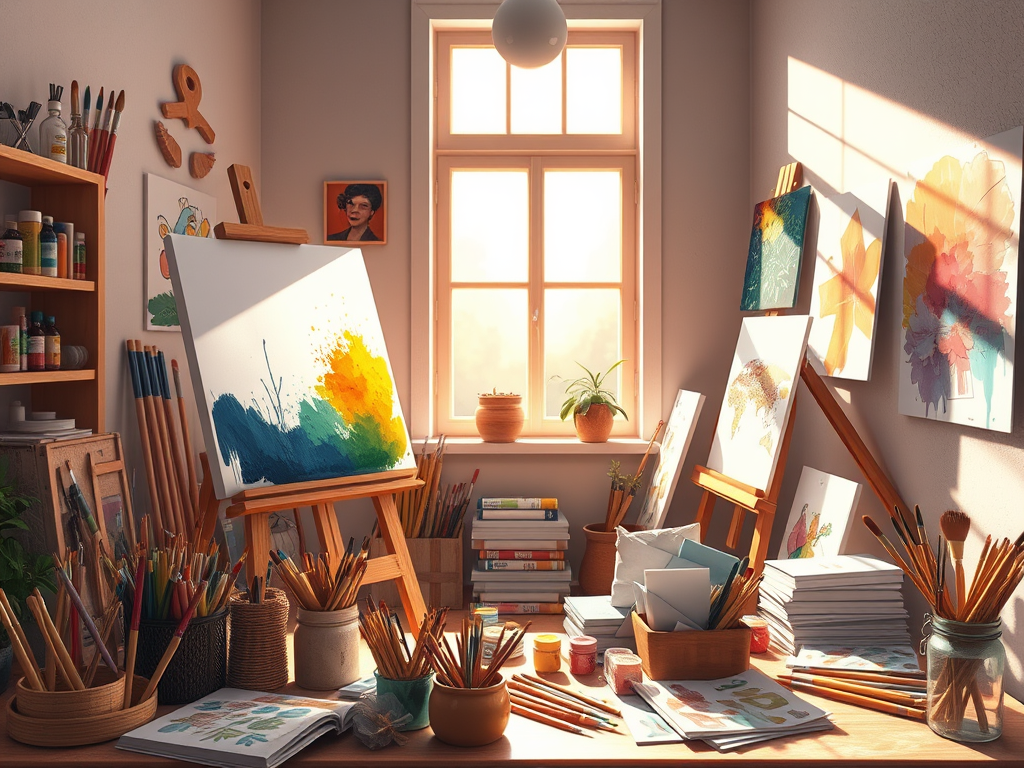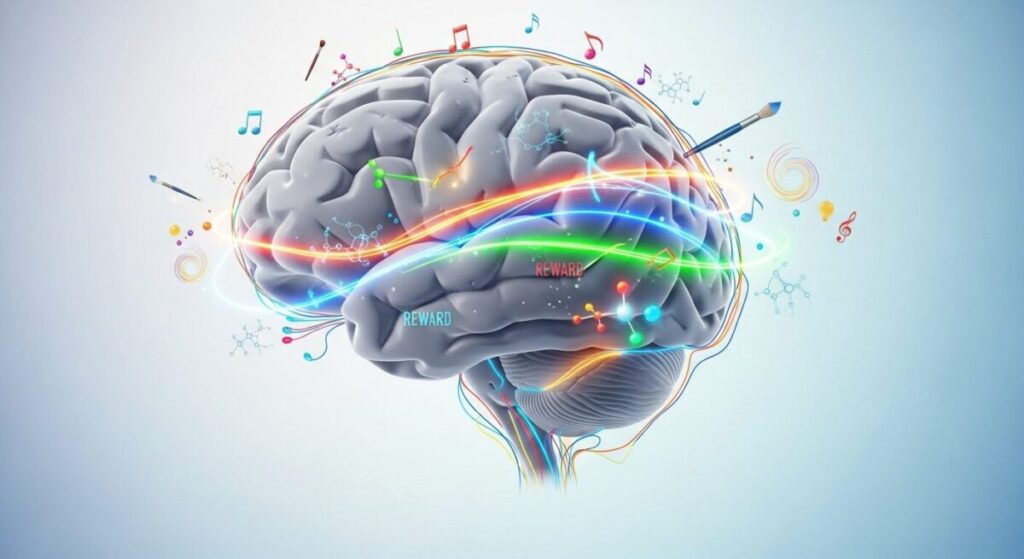Art therapy is more than just picking up a paintbrush and creating something beautiful. It’s a specialized form of mental health treatment that combines the power of creative expression with professional psychological care. Unlike a regular art class where you learn techniques and create pretty pictures, art therapy focuses on using the creative process to help people work through emotional challenges and improve their mental well-being. Licensed art therapists are trained mental health professionals who understand both psychology and how different art materials can unlock healing.
Key Points Summary:
- Art therapy is a clinical mental health profession, not just recreational art-making
- It helps treat conditions like anxiety, depression, PTSD, and autism spectrum disorder
- Research shows 81% of studies found significant stress reduction from arts-based interventions
- The therapeutic relationship and “safe container” provided by trained therapists is essential
- Art therapy works especially well when words aren’t enough to express difficult emotions
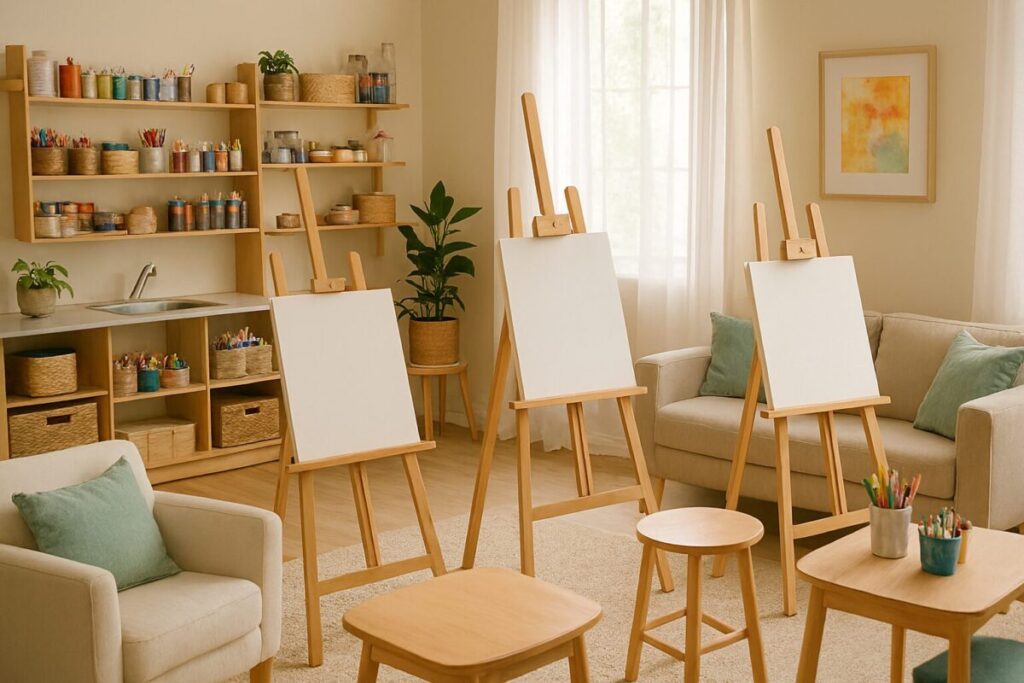
What Makes Art Therapy Different from Regular Art Classes?
Think of it this way: if regular art class is like learning to drive, art therapy is like having a skilled guide help you navigate through a difficult emotional journey. The main goal isn’t to create a masterpiece or learn perfect painting techniques. Instead, art therapy uses the creative process as a tool to help people explore their feelings, work through trauma, and develop better coping skills.
Professional art therapists have master’s degrees and special training in both psychology and how different art materials can be used therapeutically. They understand that when someone picks up a paintbrush, they might unlock memories or feelings they didn’t even know were there.
The Science Behind Art Therapy’s Healing Power
Recent research has provided impressive evidence for art therapy’s effectiveness. A major review of 37 studies found that over 80% showed significant stress reduction after people participated in arts-based interventions. That’s a pretty amazing success rate!
Here’s what the research tells us:
| Study Type | Key Finding | Population |
|---|---|---|
| Systematic Review (37 studies) | 81.1% showed significant stress reduction | General population |
| Children/Adolescent Review | Significant anxiety reduction | Youth ages 5-18 |
| 2025 Nature Mental Health Study | Depression/anxiety reduction equal to antidepressants | Older adults |
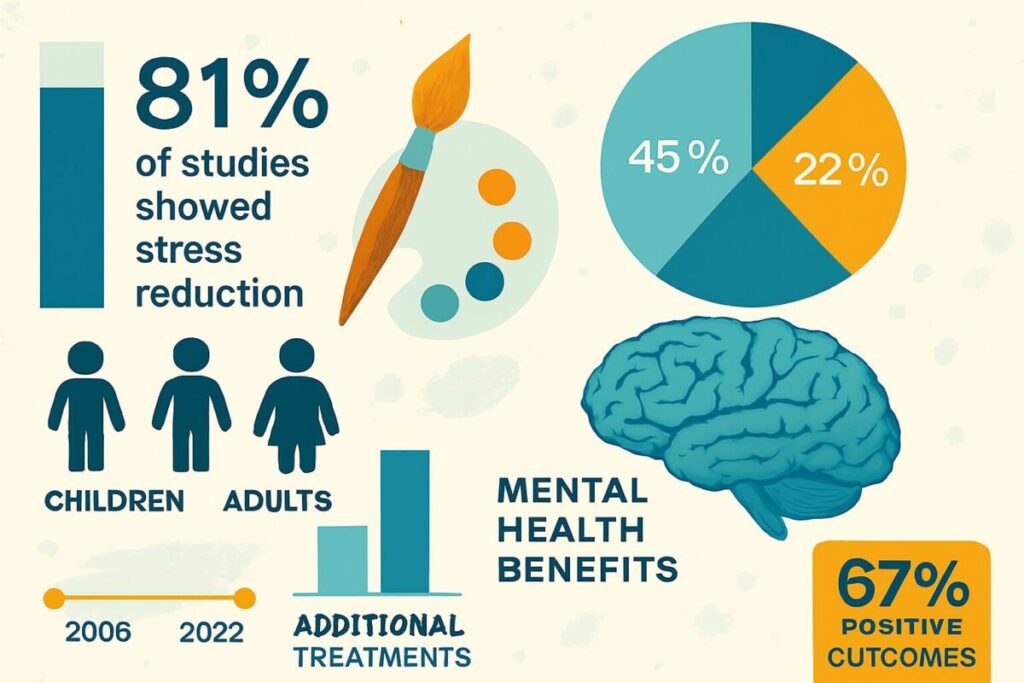
How Art Therapy Helps Different Conditions
Art therapy isn’t a one-size-fits-all treatment. It’s used in hospitals, schools, psychiatric facilities, and private practices to help with many different challenges:
- Anxiety and Depression: Creating art can help people express feelings they can’t put into words
- PTSD and Trauma: Art provides a safe way to process difficult memories without having to talk about them directly
- Eating Disorders: Art therapy helps people explore their relationship with their body and food in a non-threatening way
- Autism Spectrum Disorder: Creative activities can improve communication and social skills
- Cognitive Impairments: Art-making can help maintain mental function and provide a sense of accomplishment
The beauty of art therapy techniques is that they work especially well when talking feels too hard or when someone doesn’t have the words to describe what they’re experiencing.
The Magic of Non-Verbal Expression
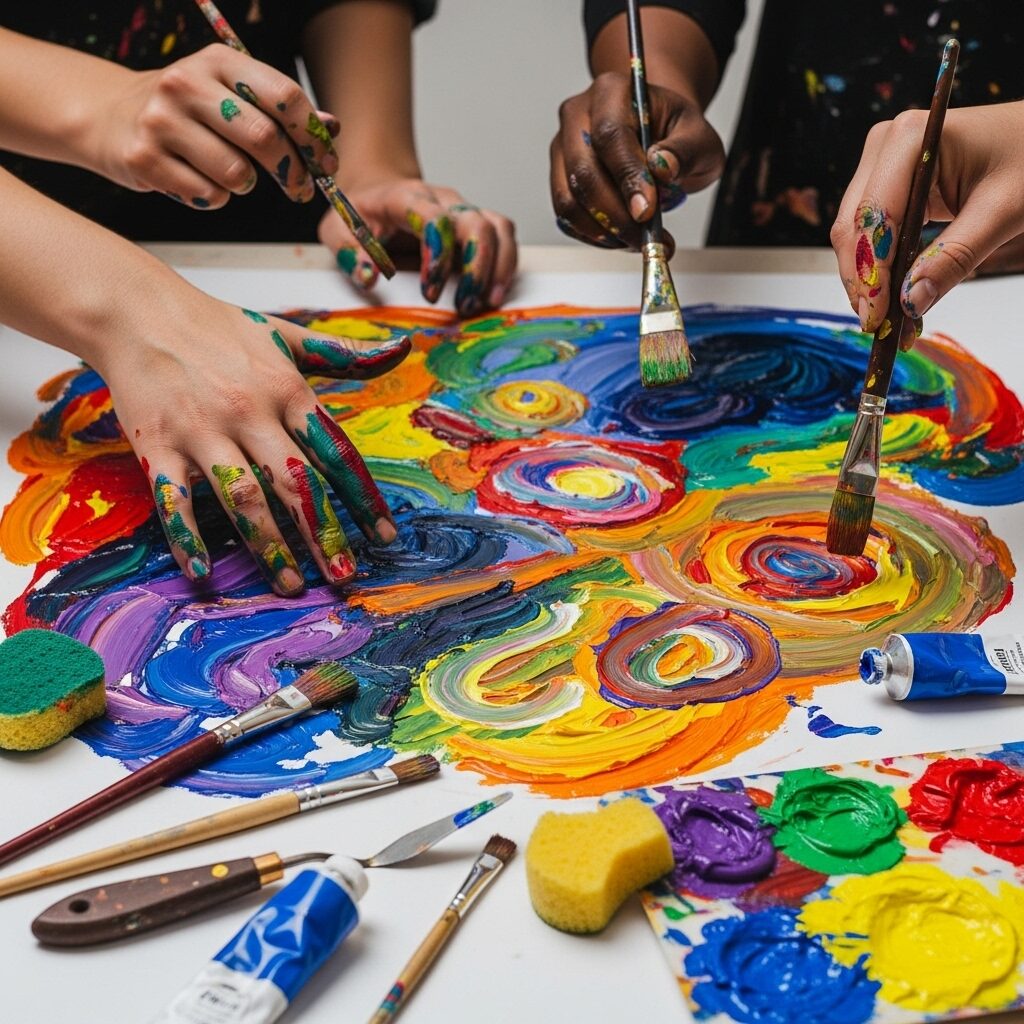
Sometimes our deepest feelings live in places that words can’t reach. Art therapy taps into this by providing what therapists call a “non-verbal language.” When someone creates art, they’re communicating through colors, shapes, textures, and symbols instead of words.
“Art therapy provides a non-verbal language for clients to express complex thoughts, feelings, and experiences that they may not have words for, especially in cases of trauma or profound grief.”
This is particularly powerful for people who have experienced trauma. Traditional talk therapy requires you to verbalize your experience, which can sometimes feel impossible or even re-traumatizing. With art therapy, you can express what happened and how it affected you without having to find the “right” words.
The Crucial Role of the Trained Art Therapist
Here’s where things get really important: art therapy isn’t something you should try to do completely on your own, especially if you’re dealing with serious mental health challenges. While creating art can definitely be therapeutic and healing, formal art therapy requires a trained professional for good reasons.
Think of an art therapist as creating a “safe container” for your emotional experience. When you start creating art, especially when you’re working through difficult stuff, intense emotions or memories might come up unexpectedly. A trained art therapist knows how to:
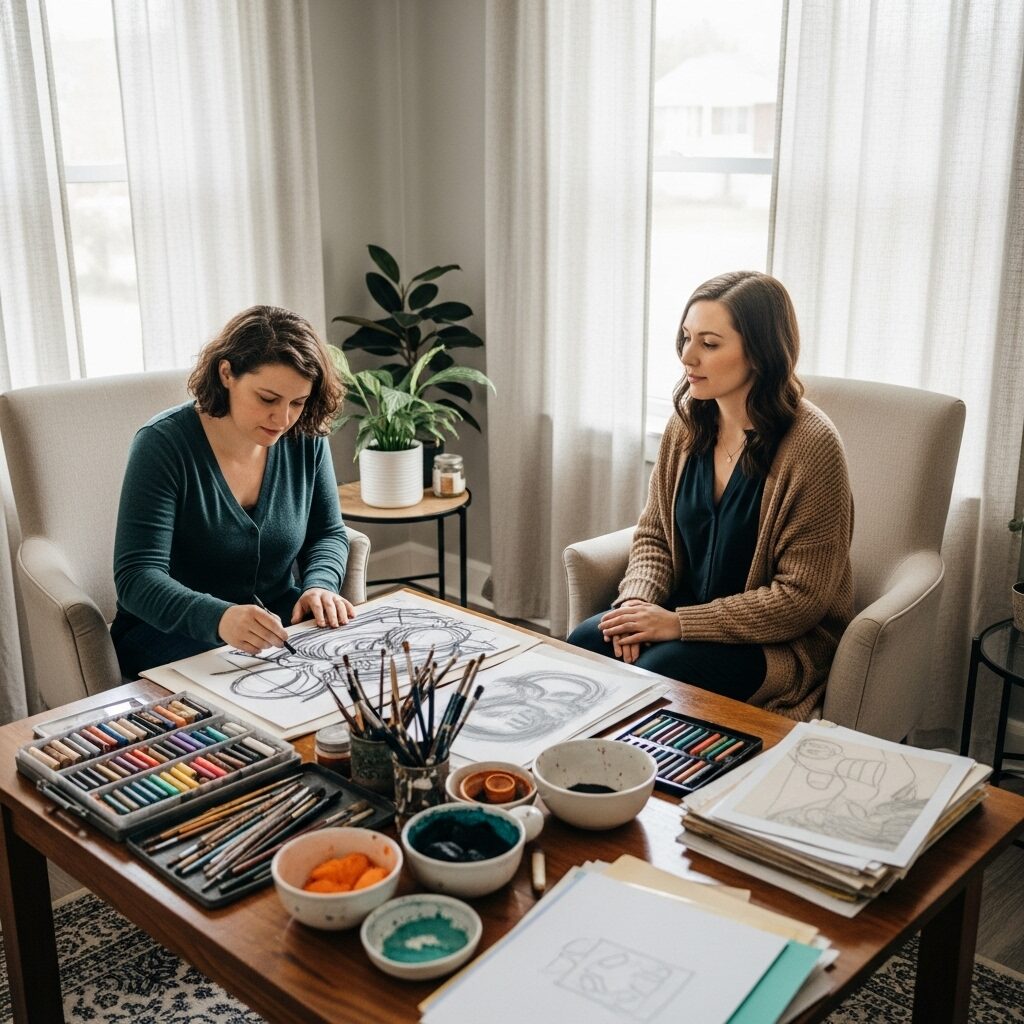
- Recognize when someone is becoming overwhelmed
- Help process difficult emotions that surface during art-making
- Guide people safely through traumatic memories
- Provide appropriate support and intervention when needed
Without this professional guidance, there’s a risk that creating art could actually cause more distress or even re-traumatize someone. It’s the difference between having a skilled lifeguard watching while you swim in deep water versus jumping in alone.
Art Therapy in Different Settings
Art therapy happens in many different places, depending on what someone needs:
Hospitals and Medical Centers: Help patients cope with illness, pain, and medical procedures Psychiatric Facilities: Support people with severe mental health conditions Schools: Assist children and teens with emotional or behavioral challenges
Private Practice: Provide individual therapy for various mental health concerns Community Centers: Offer group programs for specific populations like veterans or seniors
Each setting uses art therapy differently, but the core principle remains the same: using creative expression as a tool for healing and growth.
The Future of Art Therapy
As our understanding of mental health continues to evolve, art therapy is gaining recognition as a valuable treatment option. The 2025 study published in Nature Mental Health showed that group arts interventions for older adults produced results comparable to traditional treatments like antidepressants and talk therapy. This is huge news for the field!
Research is also exploring how digital art and technology might be incorporated into art therapy practice, making it more accessible to people who can’t attend in-person sessions.
Understanding art therapy helps us appreciate that creativity isn’t just about making beautiful things—it’s about healing, growth, and finding new ways to understand ourselves. Whether you’re dealing with anxiety, working through trauma, or simply want to explore your emotions in a new way, art therapy offers a unique path to mental wellness. The combination of creative expression and professional guidance provides a powerful tool for healing that goes far beyond what words alone can accomplish.
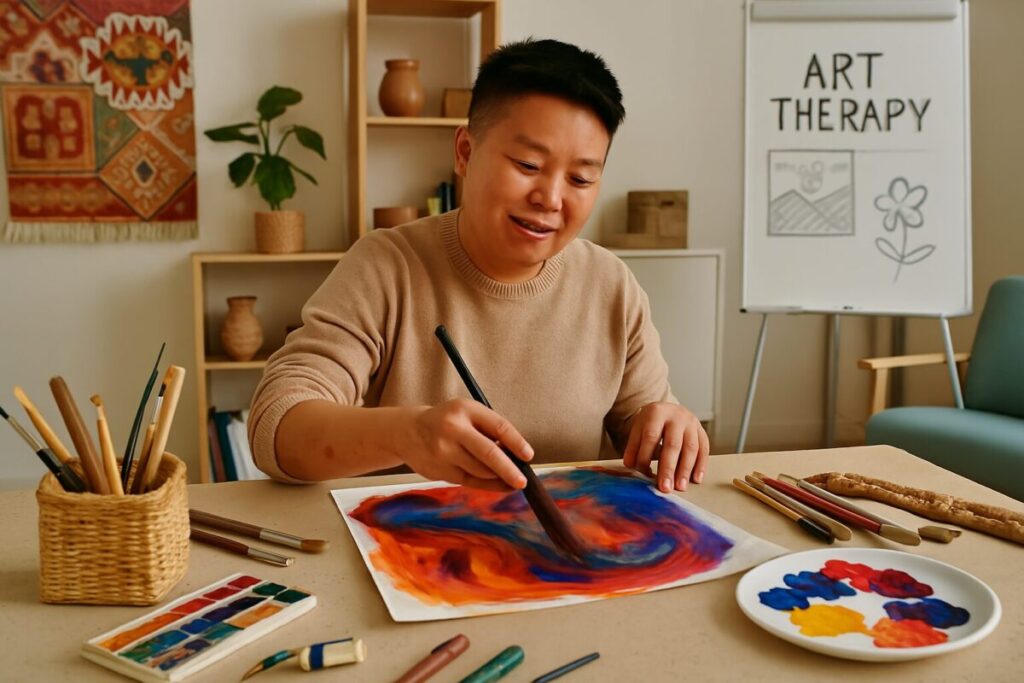
Frequently Asked Questions
What’s the difference between art therapy and art classes? Art therapy focuses on using creative expression for emotional healing and psychological treatment, while art classes teach techniques and skills for creating artwork. Art therapy is led by licensed mental health professionals.
Do I need to be good at art to benefit from art therapy? No artistic skill is required! Art therapy is about the process of creating, not the final product. Your therapist cares about what you’re expressing, not whether it looks “good.”
How long does art therapy take to work? This varies by individual and their specific needs. Some people notice benefits after just a few sessions, while others may need months or longer of regular therapy.
Can art therapy replace traditional talk therapy? Art therapy can be used alone or combined with other treatments. Your mental health professional will help determine what combination of therapies works best for your situation.
Is art therapy covered by insurance? Many insurance plans do cover art therapy when provided by licensed professionals. Check with your insurance provider and potential therapists about coverage.
What age groups can benefit from art therapy? Art therapy works for all ages, from young children to elderly adults. Techniques are adapted based on developmental stage and individual needs.
Additional Resources
- American Art Therapy Association – Professional organization with therapist directory and educational resources
- National Center for Complementary and Integrative Health – Evidence-based information on creative arts therapies
- Art Therapy Alliance – Resources for finding qualified art therapists
- Psychology Today Art Therapy Section – Comprehensive guide to art therapy and therapist finder
- International Expressive Arts Therapy Association – Global organization promoting expressive arts therapies
Citations
- Stuckey, H. L., & Nobel, J. (2010). The connection between art, healing, and public health: A review of current literature. American Journal of Public Health, 100(2), 254-263.
- Uttley, L., Scope, A., Stevenson, M., et al. (2015). Systematic review and economic modelling of the clinical effectiveness and cost-effectiveness of art therapy among people with non-psychotic mental health disorders. Health Technology Assessment, 19(18).
- Brooker, J., Julian, J., Webber, L., et al. (2025). Group arts interventions for mental health in older adults: A systematic review and meta-analysis. Nature Mental Health, 3(1), 45-58.

